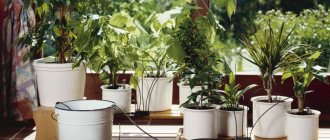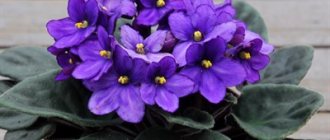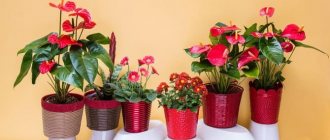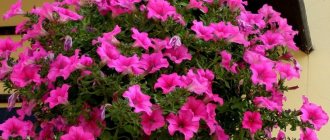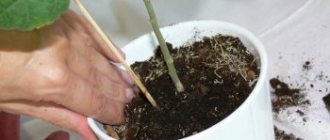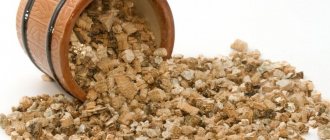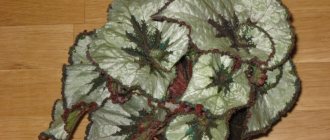A real, ceiling-high Christmas tree full of glittery ornaments and sparkling lights isn't always the most realistic option, especially if you live in a small space, have a tight budget, or have a pet who likes to play with (destroy) the decorations.
- 1 Tabletop Christmas tree
- 2 Large-fruited cypress, lemon variety (Cupressus macrocarpa var. goldcrest (Lemon cypress)
- 3 Christmas tree made from live succulents
- 4 Tillandsia in glass balls
- 5 Araucaria
- 6 Majestic palm
- 7 Crassula, or money tree
What can replace the traditional version? We offer a selection of indoor plants that can be decorated for the New Year.
5 Araucaria
Contrary to its name, Norfolk pine actually comes from the tropics, and is happiest near the South Pacific Ocean. This is a great option for an alternative live Christmas tree. The plant looks like a traditional cut tree, but unlike a living plant, it does not drop needles on the floor.
An easy-to-grow houseplant, it likes bright, direct light or direct sunlight and needs to be watered when 25% of the soil is dry. Consider measures to increase air humidity. You can even move it outside in the summer to encourage growth and enjoy a more tropical view on gloomy days. Read more about Araucarias here >>>
House plants that look like a Christmas tree
Araucaria (lat. Araucaria) is an evergreen coniferous tree plant with tiered branches (a beautiful pyramidal crown). Araucaria varifolia is the only species that is sold as a coniferous houseplant. An indoor araucaria in a pot can replace a Christmas tree for the New Year.
Leaves: needles up to 1.5 cm long; young needles are light green, but become darker with age.
Flowers: cones do not appear on araucaria at home.
Location: loves bright rooms, but in summer you need to protect araucaria from direct sunlight.
Watering: Once a week in winter, you need to water the araucaria abundantly. In summer 2-3 times a week.
Air humidity: in winter, keep araucaria away from heating devices and spray the plant every 2 days. In summer it is necessary to ventilate the room.
Transplantation: while the araucaria is young, it is replanted every 2 years, this is done in February-March. When the araucaria reaches a height of 1.2 m, it will need to be replanted every 3 years.
Soil: greenhouse, but it should not be too dense, with the addition of high-quality organic fertilizer. The substrate can be prepared in the following proportions: 1 part turf soil, 2 parts leaf soil, 2 parts peat, 1 part sand. Indoor araucarias also need good drainage.
Feeding: 20 liters of diluted slow-release granular fertilizer for the season.
Reproduction: by seeds or cuttings, but only professionals can do this. Only the tops of actively growing young shoots are suitable for cuttings; they are cut with a sharp knife in the middle of the internode and allowed to dry for some time.
Araucaria is cut at the end of August, when the shoots become hard. The cuttings are planted in separate pots with coarse sand. In September they are transplanted into pots with substrate for adult araucarias.
They need to be kept in a bright place at a temperature of +5 – 10 C.
Araucaria seeds are planted ½ length with the sharp end into the ground. Cover the top with moss, keeping it moderately moist. Sprouted araucaria seeds are carefully picked and placed in a bright place, protected from direct sunlight.
Dimensions: in a pot, araucarias grow up to 3 m, in a natural environment - 50-60 m.
Lifespan: in a pot up to 10 years, if good conditions are provided.
Pests and diseases: red spider mites and scale insects, if the air in the room where the araucaria grows is too dry.
Special requirements: provide support for the trunk. Araucaria also does not tolerate heat in winter; dry air harms it, so the temperature in the room where it grows should not be higher than 15 C.
Maintenance tip: If araucaria receives nitrogenous fertilizers, it forms impressive internodes, which disrupts its silhouette.
Therefore, use a special fertilizer for coniferous plants and divide the dose recommended on the package into 2 parts.
Araucaria can also shed leaves and lower branches; this usually happens when the temperature is too high and the air is too dry or the soil dries out.
Application: this potted indoor plant can replace a Christmas tree for the New Year. Young plants can be used for table decorations, older tall trees can be placed as decoration in the hall and great room.
Useful properties: araucaria produces phytoncides; very few indoor plants have this property. It also has favorable energy.
Boxwood instead of a Christmas tree
Traditionally, we decorate our houses for the New Year with coniferous trees - spruce or pine.
But it is not always possible to put a tree at home - there is not enough space, small children, and sometimes it is just a shame that a beautiful tree that has been growing for many years is cut down simply to stand for a week in human housing and be thrown away as unnecessary.
Lately, artificial Christmas trees have become increasingly fashionable. They are, of course, beautiful and comfortable, but still not alive. Let's think about what living plant can replace the traditional New Year tree .
Araucaria
Araucaria in a transport pot
Small decorated araucaria
Young araucarias on the mantelpiece
The simplest and most accessible plant for these purposes is araucaria. This is a tropical Christmas tree that you can grow at home as a houseplant without any problems, decorating it for the New Year. Unlike a regular Christmas tree, araucaria has needles that are lighter and silkier to the touch, which makes it also a very pleasant indoor plant.
Source: https://school-sari-tyz.ru/domashnie-rastenija-pohozhie-na-elku/
Difficulties of home care
Despite its unpretentiousness, the tree has several features that the owner should be aware of in order to take timely measures to correct the unfavorable situation.
| The plant has turned yellow. | This is how home spruce reacts to improper care and neglect. The whole difficulty lies in some delay in the bad reaction of the araucaria to discomfort and lack of proper care, so help is often late, then the araucaria can be lost forever. Other reasons for the yellowness of the crown are allowed drying out, inept replanting with damage to the root system. |
| Pest attack | The tree suffers most from attacks by root beetles, aphids or small mealybugs. Control measures: washing with an alcohol/soap solution, then spraying with special preparations to kill insects. |
In nature, there are several types of araucaria plants, which are not difficult to care for at home; these plants have both similarities and differences. The genus Araucaria includes fourteen species from the Araucariaceae family, which also includes the so-called indoor spruces.
Description
Araucaria indoors originally grew on Norfolk Island, so its second name is Norfolk pine. Then it was spread to Chile, Australia, New Guinea, and Crimea. Home spruce has the following characteristics:
- dioecious (has male and female cones), coniferous, evergreen plant;
- a flower that looks like a Christmas tree has green leaves curled into needles;
- exudes a pine scent all year round;
- the average height in natural growing conditions is 60 cm, but in the presence of fertile soil it can reach up to 90 m;
- domestic araucaria grows maximum up to 2 m;
- cones are formed in the shape of an egg or ball, the length of which is 30 cm;
- the cones contain seed or covering scales;
- the seeds grow together with the scales, so they fall off along with them when ripe;
- flowering is observed only in species growing in open ground; domestic varieties do not have this property;
- in nature there are huge cones whose weight can be 2-3 kg;
- the seeds have a pleasant taste; they were previously used as food by the American Indians;
- domestic varieties have a pyramidal crown with a right angle;
- the needles are small, up to 2 cm in length, have a soft structure, slightly curved upward;
- an adult flower develops scale-like leaves that overlap each other in a spiral;
- the home flower is characterized by very slow growth;
- the possibility of growing in a terrarium or composition with other flowers;
- a young araucaria tree is placed on a stand, an adult specimen can be moved to the floor.
Growing a homemade Christmas tree is not so difficult; it requires some care. Only then will an indoor flower decorate the room. Adults can be used as a Christmas tree. A plant lover won't have to cut down a real spruce or buy an artificial tree.
Plant species
There are a total of 19 plant species belonging to the Araucariaceae family. For the most part these are tall trees with flat needles. Some species are considered decorative; they are bred to decorate streets in the Caucasus and Crimea.
Araucaria araucana (Chilean) (see photo) Grows in Argentina and Chile. The trunk reaches 60 m in height, with a girth of 1.5 m. The cones are edible and very tasty. The lower branches may lie on the surface of the soil and disappear with age.
Araucaria angustifolia (narrow-leaved) (see photo) Grows in the mountains of Brazil, so is sometimes known as Brazilian. In nature it reaches a height of 50m, at home – up to 3m. The leaves have a bright green tint. Wood of this type is widely used in industry.
You can grow these species at home.
Araucaria bidwillii (Bidwill) (see photo) Grows in eastern Australia. In natural conditions it grows up to 50m in height. The leaves are glossy, spiny.
Araucaria heterophylla (variegated) (see photo) Grows on Norfolk Island. It can reach a height of 60m. The branches grow perpendicular to the trunk, the leaves are needle-shaped and tetrahedral.
Lawson's cypress
One of the most popular representatives of conifers assigned to the role of a New Year tree. During the holiday season, you can even find it in a regular grocery supermarket. Externally, cypress is more similar to juniper than to fir or pine. The tree has flat branches covered with small green needles-scales with a grayish-bluish tint, the shape of the bush is pyramidal. Usually this so-called “Christmas tree” is sold in a bright New Year’s flowerpot, sometimes generously decorated with tinsel and sometimes covered with artificial snow.
Lawson's cypress comes from North America and belongs to zone 6 of frost resistance - up to -23 degrees. That is, this is not the most suitable tree for temperate latitudes. When planting in the garden, an exotic coniferous plant will require a lot of care; in particular, almost all cypress trees are susceptible to burning in the sun at the end of winter, and this species also suffers from the winter cold. But finding a shelter for it is also not easy, since this breed is susceptible to fungal diseases.
It is better to plant it in partial shade in a place protected from the wind in non-blown areas with a favorable microclimate. Some gardeners have seen Lawson cypress growing on their property. However, the plant usually does not look its best, never achieving full decorativeness.
Lawson's cypress (Chamaecyparis lawsoniana). © Leonora (Ellie) Enking
Araucaria care
Temperature
At any time of the year, for this plant it is necessary to choose a cool place in the room, the desired temperature is 10-12 °C, the plant does not tolerate temperatures above 15-16 °C, the needles begin to turn yellow, and growth slows down greatly.
Lighting
Bright diffused light, light partial shade. It grows well on an eastern window, in a room with only additional lighting, otherwise the needles turn pale due to lack of light, and the plant becomes very elongated. In summer it feels better outdoors in the shade.
Watering
Araucaria does not tolerate dry soil or waterlogging equally well. In summer, it is watered more abundantly - after the soil dries out in the upper half of the pot. In autumn and winter, as temperatures drop, water less frequently; after the soil has dried out in the upper layers, wait another 3-4 days before watering again. Do not water araucaria with hard water, only rain or boiled water.
Fertilizer
To feed araucaria, use the usual complex mineral fertilizer in half the dose, i.e. less than twice as much as for other indoor plants. Feeding is carried out from April to August every 3 weeks. Organic fertilizers are not used for araucaria.
Air humidity
Araucaria prefers moderate air humidity - optimally about 50%. In summer it does not need spraying, only in dry weather when there is no rain for a long time. In winter, if you do not move it to a cool room, it suffers greatly from dry air. It has to be sprayed twice a day.
Transfer
Replanting is carried out as needed when the pot becomes crowded. Usually this is once every 2-3 years. Approximate composition of the soil mixture: 1 part turf soil, 1 part coniferous soil, 1 part sand, second option: 1 part garden soil, 1 part leaf soil and 1 part sand. In addition, for 1 pot you need to add half a glass of crushed pine bark, pH = 5.5-6.0, slightly acidic. Be sure to add high drainage to the bottom of the pot. Purchased soil is also suitable for cypresses and other conifers, or, in extreme cases, for rhododendrons, with the addition of 1/4 sand.
Reproduction
Seeds and cuttings. The seeds are sown in a mixture of coniferous and leaf soil, after having been soaked for a day in water with the addition of stimulants (zircon, sprout). The seeds are sown in pots (about 12 cm in diameter), buried about 2 cm into the ground, or rather stuck into the ground with the sharp end down and the thick end up. You can also lay it flat (horizontally), burying it only 0.5 cm into the ground. The soil is evenly moistened and the pots are placed for germination at a temperature of 15°C
It is important that the substrate is evenly moist at all times. Seeds germinate within 1-2 months
The seedling is grown in this pot until the first umbrella of leaves (first tier) opens. Then transfer it to a larger pot.
It is difficult to propagate by cuttings (the probability that you will succeed is no more than 1%), it is better to buy rooted plants. Theoretically, only apical cuttings can take root (it does not propagate from lateral branches). The cuttings, cut in July-August, are planted in coarse sand, having previously been thoroughly dusted with root roots; rooting can last several months. In January (in winter they must be grown with additional lighting) they are transplanted into pots (part of heather (coniferous) soil and part of sand). In March-April, they are replanted into fresh soil again.
"Substitutes" for coniferous trees
In apartments with good heating, instead of conifers, you can grow plants with thin and long leaves that look like pine needles:
"Substitutes" for coniferous trees. The illustration for the article is used from open sources
- Asparagus. An unpretentious crop with long, thin shoots - drooping or upright. The flower can be grown both as a hanging plant and as a bush plant.
- Rosemary. A useful herb, formed into a neat bush, similar to juniper.
- Euphorbia tirucalli (Euphorbia tirucalli). An unusual succulent plant that has small leaves only at the top. Over time, the leaves fall off, and numerous branching and intertwining stems create the illusion of coniferous thickets. Like all representatives of the Euphorbia family, euphorbia contains poisonous milky sap, so it is not advisable to grow it where there are small children and pets.
Any of the listed flowers can be decorated at your discretion - place Christmas tree beads, tinsel or bright balls in a pot or next to it and create an original festive composition.
Araucaria propagation
To propagate araucaria, I use only two main methods - seeds and cuttings. You can do this yourself at home if you follow the procedure according to the rules of care. Reproduction can be carried out only at the beginning of the growing season, but before there is no active growth. For example, April is coming.
Growing Araucaria from Seeds
Araucaria reproduces through seeds for a very long time. Germination is low, so this method is rarely used. Araucaria can reproduce by seeds independently when growing in open ground. If flower growers in greenhouses or botanical gardens decide to use this method, it is carried out in stages:
- the seeds are placed in a plastic or glass container with nutritious soil consisting of peat and sand;
- deepen by 1 mm, pouring a little earth on top;
- cover with film or a container lid so that greenhouse conditions with a temperature of 24-28 degrees are formed inside;
- install the container on the windowsill, where diffused sunlight falls; there should be no direct rays;
- periodically remove the film or lid to ventilate the container and moisten it with water through a spray bottle;
- wait until the shoots sprout, only then transplant them into individual pots.
Beneficial properties of araucaria
The indoor Araucaria Christmas tree has a lot of useful properties:
- strengthening positive energy, which has a beneficial effect on the psycho-emotional background of the owners of the house;
- improvement of the creative atmosphere, thought processes, activity;
- production of natural phytoncides that destroy pathogenic fungi, viruses, bacteria;
- oxygen production;
- air humidification.
The araucaria plant is used to decorate rooms. It will fit into any interior, making it harmonious and complete.
Recommendations for home care
Homemade araucaria needs special care. The main thing in growing this heat-loving plant is care and a competent approach.
Adaptation of a tree after purchase is especially difficult. Creating comfortable conditions for the plant to stay in a new place - temperature, lighting, watering - will help alleviate the situation. It is advisable to immediately put the tree in the right place and try to touch it less.
Selecting a location and temperature
Araucaria prefers abundant lighting and space, so this location is chosen. But even in partial shade it does not suffer much. In the garden, it is recommended to plant the tree under the crowns of tall plants. The house is located away from the scorching rays of the sun. The optimal maintenance temperature in summer is 22–23 °C, in winter 16–17 °C.
Drafts are unacceptable, which leads to drying out and falling off of the needles. In summer, it is encouraged to take the indoor Christmas tree out into the fresh air - a garden or a glassed-in balcony. In winter, it is advisable to equip artificial lighting with LED lamps and install an air humidifier.
Watering and fertilizing
The plant should be watered frequently, but without stagnating water. The mode is selected depending on the intensity of drying of the top layer of soil: it is impossible for a crust to form. The water is pre-filtered and settled at room conditions. To prevent the needles from drying out, spray them regularly - preferably twice a day. Araucaria also loves warm showers. You can place a tray of damp pebbles or moss nearby.
Fertilizing is applied once every 15–20 days. They use complex mineral compounds with minimal alkaline inclusion, which are diluted in irrigation water. It is recommended to feed araucaria throughout the growing season - from April to October. It is acceptable to feed with mullein once a month, which has a positive effect on growth.
Transfer
0
Source:
Young araucarias are replanted annually. Coniferous plants do not tolerate transplantation well, so mature araucaria is transplanted infrequently, once every 3.5 years. By this time, the roots have completely engulfed the earthen ball. Transplanting should be replaced by transshipment to help the tree survive stress. In adult plants, the top layer of soil is refreshed, but the container is not changed. The roots of araucaria are very sensitive to any influence; in order to protect them, the old soil lump on the roots is preserved. The root collar cannot be buried: the tree will first stop growing and then die. After transplantation, araucaria needs support. For several days it is placed in a shaded place and often sprayed. After 14 days they feed.
Thuja
Thuja is an evergreen tree from the cypress family with soft, needle-like leaves. Before the Christmas holidays, plants with a height of 15 cm to 2–3 m appear in stores. Thanks to the cone-shaped crown, the tree will be a good replacement for a Christmas tree for the New Year. For thuja, decorations made of lightweight materials are used. The tree is decorated with Christmas tree decorations, small bells, pine cones and bows. Instead of a garland, use multi-colored beads and add rain.
Araucaria - home care
There are a number of recommendations regarding care that are important to consider to get a beautiful and healthy plant.
- Indoor araucaria should be positioned so that light falls on it from both sides, or the flowerpot must be rotated every day, otherwise the trunk may become bent. The tree should be protected from direct rays.
- When figuring out how to care for araucaria, it is worth saying that the optimal temperature for it is 20 degrees in summer and 10 in winter.
- There is no need to trim the tree.
- During the growing season, fertilizing is recommended, for which use complex mineral fertilizer.
Araucaria - soil
A lot depends on the quality of the selected soil, so it is important to choose it responsibly
- Use slightly acidic soil.
- The araucaria plant grows well in a mixture consisting of turf and leaf substrate, peat and sand. The proportions of the parts are: 1:2:2:1.
- Another option for suitable soil is clay-turf, which contains two parts earth and 0.5 parts sand.
- Indoor araucaria can also be grown in ready-made soil mixtures for conifers, which are available in stores.
What kind of pot is needed for araucaria?
If you bought an indoor Christmas tree, then it is better to plant it in a medium-sized pot with a wide base. Another option is a flowerpot with a height of 25 cm. The growth and development of a home Araucaria tree in a pot that does not fit in size will be slowed down. A good drainage system is of great importance. There should be holes at the bottom of the pot to prevent stagnation of moisture.
Homemade araucaria - watering features
To carry out irrigation, it is necessary to use clean, settled water, which should be at room temperature. The earthen lump should not be allowed to dry out completely, but stagnation of water is also contraindicated. If something is done incorrectly, the branches will begin to wither and the needles will fall off. The araucaria flower needs periodic spraying, and this procedure is especially important in winter, when the air in the room is dry. The procedure should be carried out twice a day. You can also use a tray with moistened expanded clay.
Transplanting araucaria at home
A homemade Christmas tree does not require frequent replanting, so the procedure should take place no more than once every 3-4 years, when the earthen ball is completely entwined with roots. It is recommended to do everything in April or May. Transplanting araucaria should take into account a number of features:
Prepare a new portion of soil; suitable mixtures were discussed earlier. It is also necessary to buy a new pot, which should be larger in diameter compared to the previous pot. First, thoroughly water the soil around your indoor araucaria, which will make removal easier. You need to remove the roots carefully so as not to damage them. It is not recommended to clear the roots of old soil. Place drainage in a new pot, add soil and insert the tree
It is important to consider that the root collar of the plant should be at the same soil level as before. It is prohibited to cover it with soil. All that remains is to lightly compact the soil and water it well.
Araucaria - diseases
If you do not care for your Christmas tree properly, problems may arise.
- If indoor araucaria begins to turn yellow and dry, and the needles fall off, this indicates that the air is very dry or the temperature in the room is high. Take care to humidify the air.
- A curved trunk indicates uneven lighting and you need to turn the flowerpot the other way.
- When the lower branches of an indoor Araucaria tree dry out, this may indicate a root beetle attack. The way out of the situation is to treat the trunk with an insecticide solution.
- If the plant grows very slowly, then this indicates the presence of a large amount of calcium in the soil. It is best to use soil for pine needles, and use soft water for watering.
- If thin young shoots appear, this indicates an insufficient amount of nutrients. The situation can be corrected by applying mineral fertilizers.
Care after purchase
After purchasing, the needles must be washed to remove dust under the water tap.
For growth, you should choose well-lit corners without direct sunlight.
You should not choose areas close to central heating or heaters.
Arucaria Chilean is destroyed by sweltering heat. The needles grow well in botanical gardens, front gardens and outdoor balconies.
Watering
Watering should be done with settled water at room temperature. The home dweller prefers frequent watering as the soil dries out. Pine loves constant spraying from a spray bottle.
Such procedures prevent the flower from drying out, maintaining its original evergreen color. In winter, watering and spraying should be reduced to a minimum.
Bloom
The tree is a dioecious evergreen. It has male and female inflorescences. Previously, monoecious plants were sometimes found.
But over time, the pine tree changed its gender.
Female cones are very high. They resemble a spherical shape. The diameter of the cones can vary from 5 to 30 centimeters. They contain edible healthy seeds in quantities from 70 to 250 pieces.
Male cones are located at the very top of the tree. They are much smaller in size than female cones. They reach no more than 12 centimeters in diameter. They are very narrow, elongated, and cylindrical in size.
Crown formation
The crown of a young tree is pyramid-shaped, very wide. The lower branches are on the soil. Over time, the tree begins to “shed” and the stems fall off. The lateral branches are in whorls. They can be elongated and extended.
The crown of adult plants is flat and umbrella-shaped. It is located only at the top of the trunk. The stems are covered with small spiny leaves. They have a rough leathery texture. The leaves are arranged spirally. They completely cover the stems.
Upon palpation, the leaves are rough, prickly, dark emerald green. The bark of the trunk is fissured, wide, longitudinal, and resinous.
Ground, soil
The tree needs a substrate mixed in equal proportions with peat, sand, turf and leaf soil.
For Araucaria Chilean, coniferous soil should be added to the soil. In such soil, pine takes root well, actively grows and develops evenly.
Planting and transplanting
Planting or replanting should be done in March-April or June. Only wide and very overgrown specimens require replanting. Around such trees, the soil is entwined with a root system. This fact is due to the fact that needles do not tolerate transplantation.
For the procedure, it is necessary to choose wide containers. Small pots will not allow the tree to develop properly and actively. Adult specimens are replanted no more than four times a year.
Young trees can grow for more than five years without human intervention.
Reproduction
The plant propagates by planting seeds and dividing cuttings. For cuttings, cut off strong shoots. They are divided into small segments no more than 15 centimeters long.
Each cutting should have at least 15-20 green needles. The cuttings are planted in moist soil and temperature factors are carefully monitored.
It is best to plant at an angle. The recess should not exceed two centimeters. Planting of seeds is done in early spring. Seeds are sown in prepared soil and thoroughly moistened. After three months, the first shoots should appear.
Growing
Araucaria Chilean requires systematic care. The plant loves bright rooms with excellent ventilation. Containers are allowed to be taken out into the front garden or onto the balcony. Avoid direct sunlight.
The flower loves shade very much. Requires temperatures above 12°C. Otherwise, the flower needles wither and fall off.
Does not grow well in destructive heat. Requires good moisture and systematic watering.
Temperature
Araucaria Chilean does not take root well indoors. The plant definitely needs fresh air. The best temperature in winter should not fall below 10°C. But it should not exceed 15°C.
In spring, the plant is comfortable at a temperature of 19°C. The needles do not tolerate heat above 22°C. Direct exposure to the sun should be avoided.
The tree loves diffused light. There should be lighting on both sides. If the tree does not grow in a greenhouse, then the pine is rotated 90° every week.
Variety selection
When choosing mini-Christmas trees , you should remember that this is planting material and the appropriate requirements must be presented to it. As in the case of purchasing a seedling, you should immediately decide where the ornamental tree will grow in the future and whether the proposed conditions are suitable for it. It is important to know what type of conifer it is and whether it can be planted in the ground in your climate.
Farmers in the northwestern territories and central Russia can safely purchase the following varieties of conifers:
- spruce or European spruce;
- blue, white or Canadian spruce;
- prickly spruce;
- spruce bud;
- Serbian spruce.
These may be some varieties of cedar pines (European, Siberian, common) and fir (graceful and Siberian).
Junipers and thujas in containers are also used as decorative Christmas trees.
Particularly popular among gardeners is Konica, a dwarf decorative form of Canadian spruce. It is extremely attractive and easy to care for, which is why today it is cultivated all over the world, including in Russia. Its miniature size is of particular value in the eyes of gardeners, since this quality makes it possible to plant a tree even in the smallest areas.
Mandatory plant inspection
This procedure will save the buyer from possible failures . A small tree should be fresh, its branches ─ elastic, and its needles ─ shiny.
The fact that the plant spends its “childhood” in a container is even good: this is the key to successful wintering and successful transplantation. But provided that it has a healthy root system. This can be checked by carefully lifting the tree along with a lump of earth. The soil is braided with white small roots ─ that means everything is in order.
You should also pay attention to the container in which the plant is located. Its size should correspond to the crown of the tree. Very small pots are evidence that growth stimulants were used, and this will have a negative effect in the future when transplanting into open ground.
Features of caring for araucaria
Proper care of araucaria is quite simple and does not require special knowledge or equipment. For active and long-term growth of the plant, it is enough to follow the basic rules.
Watering
For araucaria, the correct watering regime is extremely important. You should not be late with it; the earth should be slightly damp all the time, but without excess dampness. In winter, if cold conditions are ensured, watering is reduced, but the soil moisture is also monitored.
Temperature
At any time of the year, araucaria requires coolness. The most pleasant temperature for araucaria in summer is approximately 20 degrees, in winter 10–12 degrees, sometimes about 5 degrees Celsius is recommended. If you have a glazed loggia that can be heated on cold days, or a cool veranda where other indoor plants are cold, install araucaria there.
Spraying
High air humidity is also important. Plants need daily double spraying. If possible, keep them away from heating units.
Lighting
Araucaria is a photophilic plant and, when grown indoors, needs a huge amount of bright light. However, it must be protected from direct sunlight. In the summer months, if desired, it can be moved outside, but at the same time you should choose a place that will be thoroughly protected from direct rays of the sun and precipitation.
It is best to install the bush in a place where light will fall on it from both sides at once. In this case, if the light falls only from one side, then in order for the crown to grow and form evenly, the plant should be turned 90 degrees once every 7 days.
Top dressing
In summer and spring, the Araucaria tree is fed twice a month with a very weak fertilizer composition with a low level of calcium inclusion. It wouldn’t hurt to fertilize the plant with mullein infusion every four weeks.
Transfer
Transplantation should be done in the summer and in the first months of spring. Transplantation of araucaria is carried out exclusively on demand, only when the earthen food is entirely in the roots. It is worth remembering that only overgrown plants need to be replanted, since araucaria itself does not tolerate picking well.
Adult or large plants require replanting at least 4 times a year. Plant pots should be as wide as possible and have enough drainage. If the araucaria is planted in a small pot, then this can serve to stop the growth of the plant.
Trimming
Under normal conditions at home, it is impossible to cultivate a tree 50–60 meters high and 1 meter in diameter. The recommended maximum height is 1.5 meters. If you cut off the top, the plant will stop growing upward. This manipulation is carried out only if there is a desire to stop growth, or to propagate Araucaria varifolia by cuttings.
You can similarly cut off the side branches for rooting, but the flower will not be able to form a vertical trunk and will grow vertically. This method can be used if you want to cultivate a bonsai tree. As such, the plant does not need pruning; it is permissible only in the described cases, and for sanitary purposes in case of damage by parasites or diseases.
Diseases and pests
If you know the main rules of maintenance, then growing araucaria will not pose any special problems:
The most important part of the plant is the top growing point. If you damage the top of an araucaria, its upward growth will end and an ugly tree will begin to develop; If the temperature in the room is too high, the plant will begin to shed its needles and lower its branches; Low air humidity and poor watering lead to drying of the needles and the shoots themselves; If there is a lack of nutrients, the shoots and the plant itself will become thinner; Excess calcium content leads to slow growth of araucaria. Of the parasites that are dangerous for araucaria, aphids, root beetles and mealybugs that damage wood
If pests are identified, you need to wash the plant with soap or alcohol solutions and spray with insecticides.
Dropping needles from branches located at the bottom of the plant is a natural moment. To preserve the decorative shape of araucaria, they should be cut out, and ugly shoots should also be removed. For preventive purposes, the soil should be sprinkled with sulfur to protect against fungal infection.
Possible problems during cultivation
The following problems and their causes are identified when growing indoor Araucaria flowers:
- dryness of the main stem - insufficient watering;
- slow growth is the norm for a houseplant, pathology occurs in the absence of fertilization;
- dry, yellow needles – sunburn, lack of watering or spraying, nutrient deficiency;
- sluggish vegetative mass with dead shoots - the location of the flower in a draft or in excessively cold room conditions.
Beginners complain about the lack of flowering. But it is worth remembering that it occurs during natural growth and rarely forms under indoor conditions.
Large-fruited cypress Goldcrest
This beautiful plant with golden needles is especially popular among gardeners. Cypress prefers bright, diffused sunlight and does not like frequent and sudden changes in growing conditions, so try to move and rotate it as little as possible.
With the onset of warm weather (10-14°C), it is advisable to place the cypress outdoors. With the onset of autumn cold, the plant is brought into the house and kept at a temperature of 8-10°C, away from central heating devices. If you don't have a cool room in your home, mist your plants with warm water twice a day.
Watering should be plentiful from spring to autumn, moderate in winter. Fertilizing is carried out from spring to autumn with fertilizer for coniferous plants in half concentration.
Cypress does not require frequent replanting (every three years), but this must be done very carefully, trying not to damage the roots of the plant. For replanting, use compost from a mixture of peat, sand, leaves and pine litter.
When there is insufficient lighting, the cypress stretches out and loses its shape, and when there is an excess of direct sunlight, the needles turn yellow and crumble.
